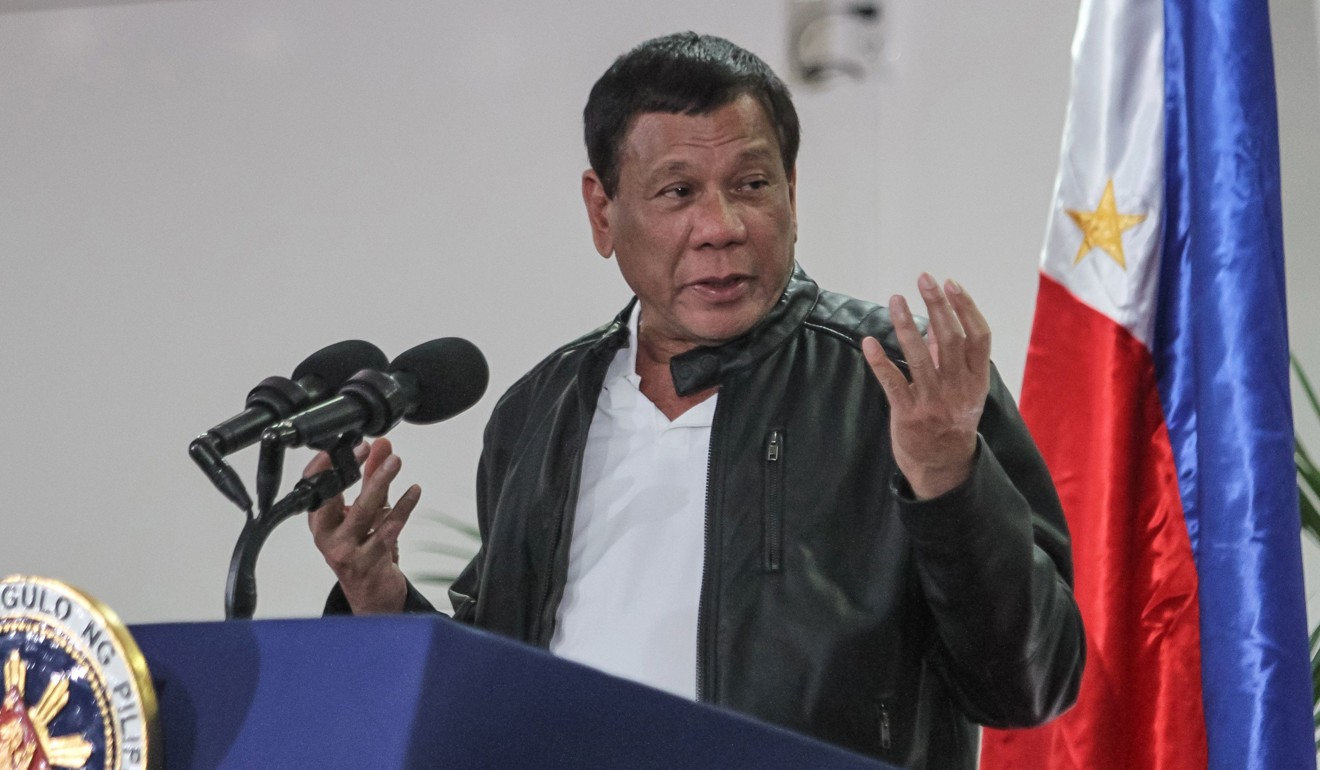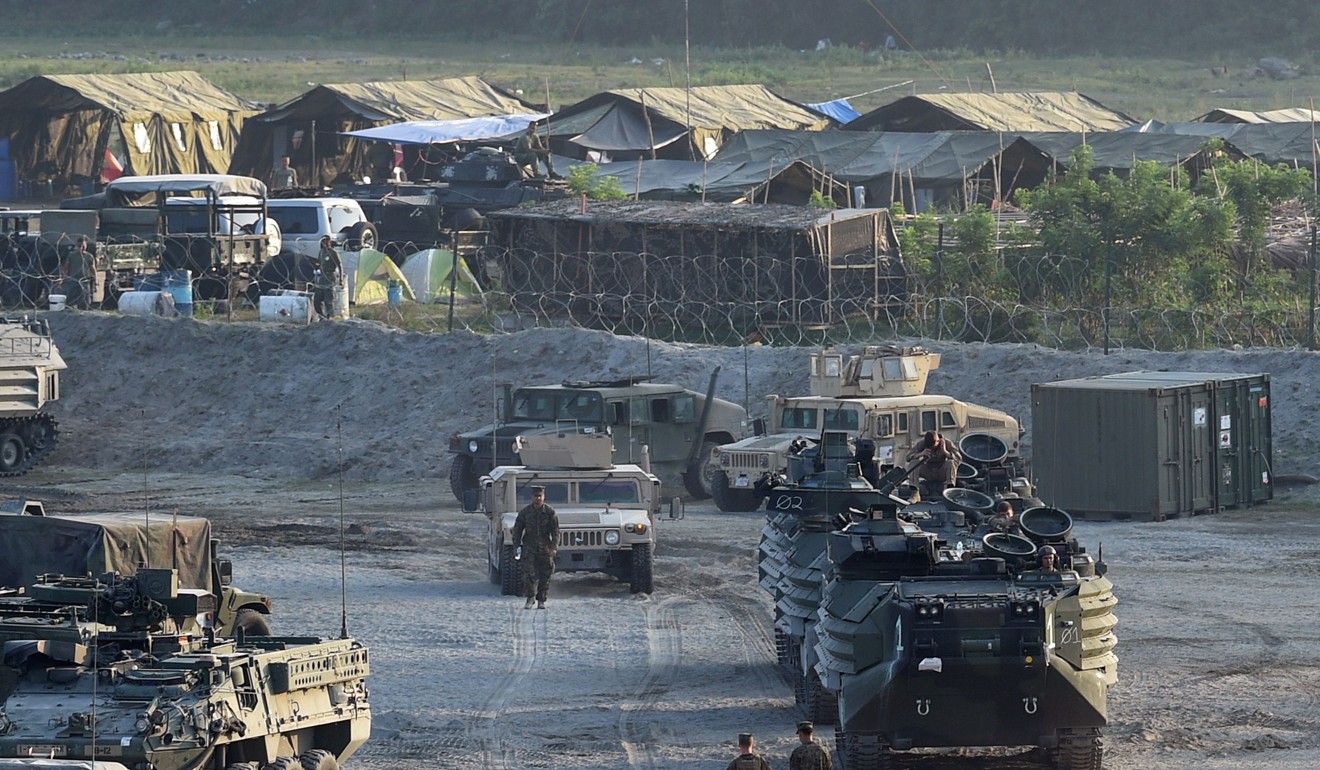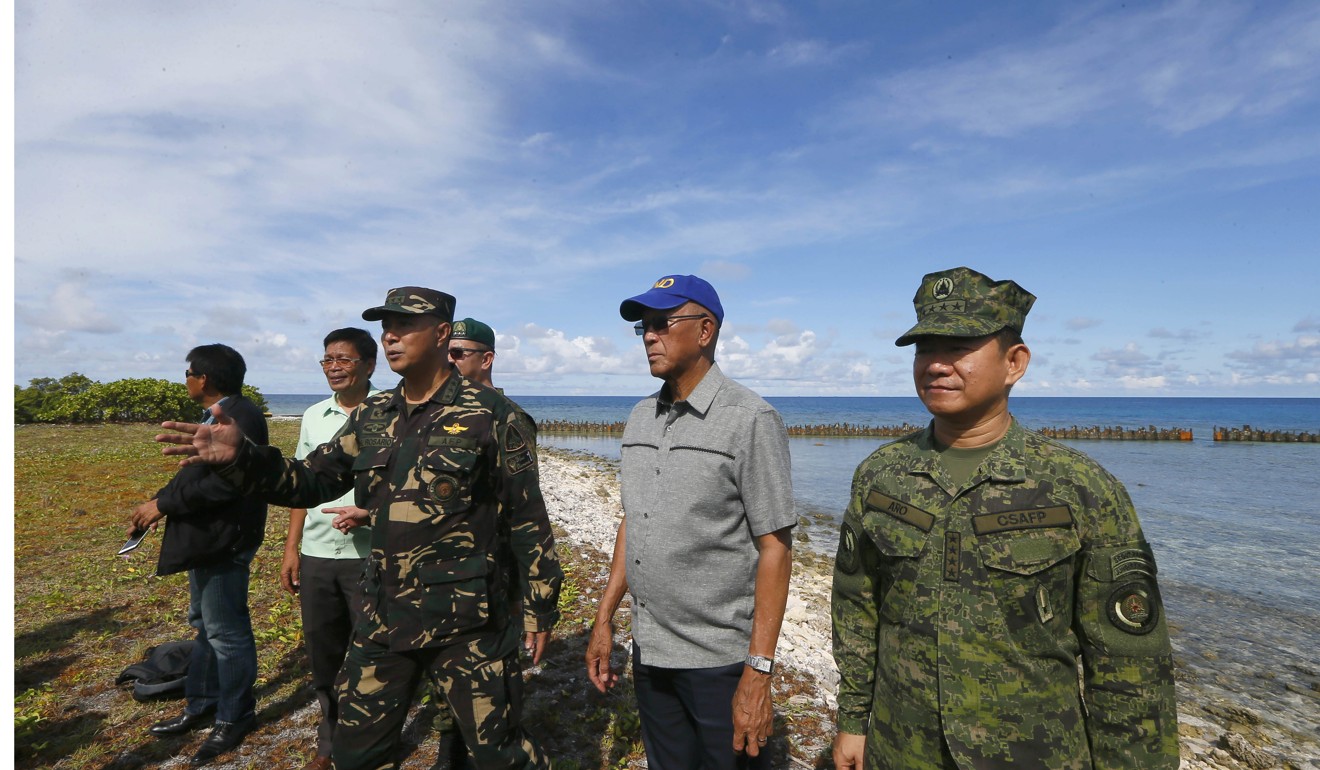
Duterte put his foreign policy stamp on his first year by obtaining dual defence support from China, US
Richard Heydarian says that in exchange for Beijing’s assistance, the brash Philippine president has continued to downplay the South China Sea disputes
Throughout his first year in office, Philippine President Rodrigo Duterte embarked on a fast and furious diplomacy, visiting 17 countries on 21 foreign trips. Despite his advanced age, and lingering concerns over his health, the former provincial mayor racked up over 77,542 miles, more than tripling his predecessors’ expenditures on foreign trips, thanks to his usually large entourage of businessmen and cabinet secretaries.
Crucially, the Filipino president visited China twice and became the first leader from his country to conduct a state visit to Russia, and, above all, deliberately snub major Western capitals. Invoking a pro-active diplomacy that primarily focused on Asian countries, Duterte signalled his embrace of a post-American order, where Asians take charge of their own destiny.

As Duterte made clear shortly after his election victory last year, he seeks an independent foreign policy, which “will not be dependent on the United States”. But as the Philippine military struggled against Islamic State-affiliated fighters in Mindanao, Duterte had to welcome Washington’s assistance, albeit reluctantly. Yet, eager to avoid a relapse into overdependence on America, the tough-talking Filipino leader has also welcomed defence aid from China.
Throughout contemporary history, Washington has usually been the first major foreign destination for Filipino leaders, who largely depended on American economic largesse and military muscle to address domestic political challenges.
Duterte’s predecessor, Benigno S. Aquino III (2010-2016), visited the US as many as seven times in six years. The same was the case for Duterte’s chief foreign policy adviser, Fidel Ramos throughout the 1990s, who played a clear role in reviving Philippine-China relations in the past year. Gloria Macapagal-Arroyo (2001-2010), a key ally of Duterte in Congress, visited the US as many as 18 times during her tenure.
As of this writing, there is still no clear indication whether Duterte seeks to visit Washington anytime soon. When President Donald Trump invited Duterte to the White House in April, the Filipino leader quickly demurred. Aboard a visiting Chinese warship in his home city of Davao, Duterte said he “cannot make any definite promise,” since he is too busy with other trips, particularly to Russia.
There is still no clear indication whether Duterte seeks to visit Washington anytime soon. When President Donald Trump invited Duterte to the White House in April, the Filipino leader quickly demurred.
Yet, shortly after visiting Moscow, Duterte confronted his biggest political crisis to date, when hundreds of Islamic State-affiliated fighters, under the command of the Maute Group, laid siege on Marawi, the country’s largest Muslim-majority city. Within weeks, the Pentagon dispatched special forces, several drones for intelligence gathering, and a new cache of weapons at the request of the Philippine military to end the militant siege.
More recently, the two allies also conducted joint patrols in the Sulu Sea, the stronghold of the notorious Abu Sayyaf Group, a leading element affiliated with regional Islamist militancy, which has engaged in frequent kidnap-and-ransom operations in the area. During the high-profile exercise, the American Littoral Combat Ship USS Coronado joined the Philippines’ flagship warship, the Del Pilar Class Frigate BRP Ramon Alcaraz. The message was clear: The bilateral alliance is alive and kicking.
Perturbed by the prospect of an expanded American military presence in the Philippines, China doubled down on its defence diplomacy. It provided an unprecedented defence aid package, including $12 million in weapons and ammunition, which the Philippine military can use for counter-terror operations.

The Chinese weapons can also be used by the Philippine National Police for Duterte’s war on drugs campaign, which has been heavily criticised by Western powers. China also pushed for joint exercises between the People’s Liberation Army and the Armed Forces of the Philippines (AFP) as well as a bilateral intelligence-sharing arrangement.
Earlier this year, China offered a $500 million loan to the AFP on the sidelines of the Belt and Road Initiative summit in Beijing in May. These moves represent a calculated attempt to build mutual trust and institutionalised cooperation with the Philippine military, which has been historically close to Washington and increasingly influential in shaping Duterte’s defence and foreign policy.
As Duterte has admitted in the past, half joking: “The military would oust me”, unless he took into consideration their views on key political and strategic issues. The Filipino president has appointed as many as 59 former military and police officials to key positions in the government.
Up to seven former and current AFP chiefs of staff have been appointed to cabinet positions. Beijing seems eager to overcome the Philippine military’s long history of suspicion and mistrust towards China by extending large-scale assistance in counter-terror and domestic security operations.

But Beijing isn’t only concerned about mitigating Washington’s military presence in the Philippines. It is also worried about the prospect of a large number of Uygur and Chinese Muslim fighters travelling to Mindanao and gaining lethal experience that can be used later in troubled regions such as Xinjiang.
China’s trump card, however, is economic assistance in Mindanao. With the Philippine government allocating $400 million to the reconstruction of Marawi, and planning to build a large infrastructure network in Duterte’s home island, China is in a strong position to play a key role in post-conflict rehabilitation and development in affected areas. In exchange for Beijing’s assistance, Duterte has continued to downplay the disputes in the South China Sea and set aside the Philippines’ July 2016 landmark arbitration award, which nullified much of China’s maritime claims in the area.
As Duterte enters his second year in office, he has found himself at the receiving end of both American and Chinese defence assistance. So far, this is perhaps his signature foreign policy achievement.
Richard Heydarian is a Manila-based academic and author

